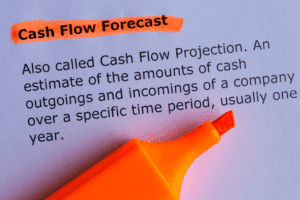
Amortization refers to the allocation of the cost of intangible assets or prepaid expenses, while depreciation is the allocation of the cost of tangible assets. The main difference lies in the nature of the assets being amortized or depreciated. At the end of twelve months, the asset account would show a balance of zero for the insurance premium and a total of $12,000 in the insurance expense account. Prepaid expenses are considered a prepaid asset because the item that is paid for in advance, such as the rent or insurance coverage, has monetary value. A prepaid expense is an expense that is paid for in advance and usually in a lump sum. Items such as insurance and rent can be paid for with one payment that covers the cost of the expense for several months or a year.
Journal Entry Examples
- Over time, you expense the prepaid amount on the income statement each month for the rent example and each quarter for the insurance example.
- As well as professional service agreements often include upfront payments that cover future work.
- The most-common examples of prepaid expenses in accounting are prepaid rent from leases, prepaid software subscriptions, and prepaid insurance premiums.
- Companies with sloppy prepaid tracking often face extended audit procedures and potentially material adjustments that could have been avoided with better processes.
- CitrusOne is a venture-backed vertical SaaS product tailored specifically for lemonade stands.
CGAA will not be liable for any losses and/or damages incurred with the use of the information provided. Leverage the full capabilities of Lark Sheets to document, track and collaborate on your accounting projects initiatives.
- Accrual accounting dictates financial transactions are recorded when they occur, regardless of when cash changes hands.
- Thus, mastering prepaid expenses is not just an accounting necessity; it’s a strategic advantage.
- Utilizing modern tools like Numeric and adhering to best practices, teams can significantly enhance efficiency and accuracy in managing this critical financial component.
- Accrual and cash basis accounting are two accounting methods for recording transactions.
- Cross-functional alignment between procurement, FP&A, and accounting teams prevents prepaid expenses from falling through the cracks.
- Many types of expenses must be purchased for a year, or multiple years, in advance.
Schedule a Demo

As the expense is incurred over time, the asset is gradually expensed through the process of amortization. This process involves dividing the total cost of the prepaid expense by its useful life and then expensing a portion of that cost amortize prepaid expense each accounting period. Understanding the concept of amortization of prepaid expenses is essential for accurate financial reporting and decision-making in accounting.
Prepaid Insurance
- Logging your prepaid expenses correctly into your balance sheet is crucial for tracking costs and maintaining accurate financial records.
- A “prepaid asset” is the result of a prepaid expense being recorded on the balance sheet.
- This ensures that the expense is accurately reflected on the income statement over the period in which it is used.
- It’s important to establish clear internal policies for reviewing, documenting and amortizing prepaid assets.
- Understanding things like this can feel a bit complex, like sorting through a lot at once.
- As time passes and the benefits of the assets are realized, the asset is amortized, and the corresponding amount is recognized as an expense on the balance sheet.
- It reduces the number of invoices a company must process throughout the year.
This could be insurance, rent, supplies, or any other cost paid upfront for future benefit. A small tech startup prepays $24,000 for an annual subscription to essential software tools. They amortize $2,000 each month, reflecting the expense in their financial statements over the subscription period.
To represent this accurately, you would have to enter this amount as a rental expense every month in the income statement and reduce the rental prepaid expense by the same amount simultaneously. In prepaid accounting, you record a prepaid expense as a current asset because of its future value to your business. It gradually becomes an expense as the benefit comes to life through amortization. You generally record regular expenses as an expense in real time, and you typically classify them as current assets because your business expects to use the product or service within a year. Prepaid expenses are typically recorded as an asset on the balance sheet, and then expensed over time as the benefit is received.

This is because the company has paid the expense in advance, but hasn’t yet received the benefit. To record the prepaid rent expense, you’ll need to recognize a prepaid asset that will be utilized at the https://cloud.sabaseo.com/~beta/mztributebands-wp/expense-account-definition-workings-examples-how/ end of the first month of the lease. This means that on March 31st, 2023, you’ll need to release the prepaid expense. Prepaid expenses need to be capitalized, and accounting for them correctly is crucial. Under GAAP accounting, prepaid expenses are not derecognized all at once, but rather gradually and systematically amortized over the term of the agreement. By amortizing $1,000 each month, they spread the cost over the coverage period, ensuring accurate and consistent financial reporting.
Subsequent Amortization of Prepaid Expenses

Prepaid expenses are payments made in advance for goods or services expected to be received on a later date. Prepaid expenses can be in the form of rent, insurance, or subscription services, and they are typically paid in advance to secure a future benefit. Prepaid expenses are typically How to Invoice as a Freelancer considered current assets since they’re expected to be used within a year for standard business operations. However, a multi-year contract will add some complexity in having both current and non-current asset components. There are several reasons why your business might prepay for expenses, including the opportunity to secure discounts, take advantage of tax deductions, and improve cash flow.